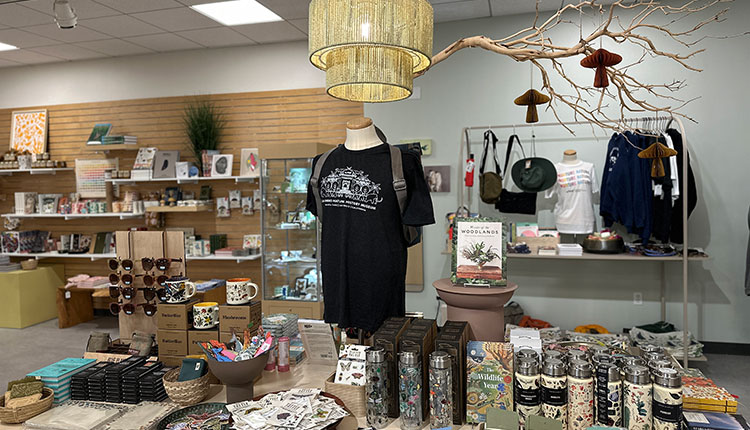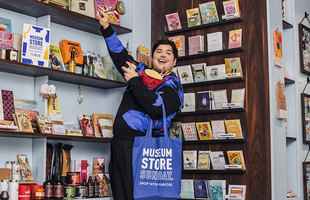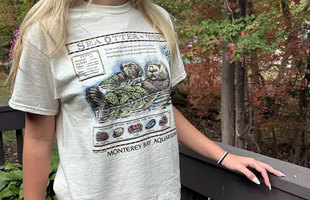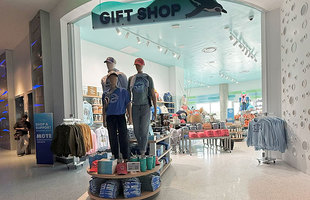
First, there was the reimagined atrium space and Paleontology Center at The Nat, then the San Diego Natural History Museum re-evaluated its retail and hospitality offering and enlisted in inspired, locally based Gold Leaf to plant another seed.
Gold Leaf opened its first San Diego location in 2016 when proprietors Sonya and Kevin Kemp combined a passion for art and design into a “biggest dream” shop. They took over the Burlingame Garage, circa 1914, in the historic South Park neighborhood.
Gold Leaf in The Nat is close to the citywide destination that draws visitors and locals and “the right step,” says Sonya Kemp, who is eager to reach out to the city’s Balboa Park community. “Nature has always been a source of inspiration for us,” she says of an expanded product selection of all things bird, beetle, rock, shell and dinosaur.
The Nat’s north entrance welcomes visitors into a 1,700 square-foot retail space adjacent to the atrium. There’s a San Diego and personal connection for the Kemps.
“We got married in South Park, and it’s a great community where we found a building for our first shop in a building that was constructed before the World Fair,” says Kemp.
Their vision: to spread the love of nature. What better place than The Nat?
An entry point by “the big fig tree” where locals gather, close to parking, seems like the back of museum but is a secondary entrance. Whichever way guests flow into The Nat, Gold Leaf is a first stop and attention-getter.
“We’re close to the cafe and the front desk. It’s a huge space, and we love being a part of what visitors can take away from the museum, from what they learn to souvenirs that have purpose.”
Field trippers and international guests tour The Nat. Gold Leaf stocks a diverse and relevant inventory. The younger set is a soft spot for Kemp. “We have a significant kids’ area with lots of plush, and we keep it really native,” she says.
Mountain lions, bears, fox, squirrels, zebra and Muir cats are in the house. So are sealions, sharks, starfish and crabs. You’ll find coyotes and butterflies but forget camels. “We only offer animal themes that are actually found here,” Kemp says.
Sustainability matters in a big way and so does pricing. Customers can shop among a selection of wooden toys and items that are $20 or $10 and less offers items for children with allowance money to spend.
“We want to feel like everyone can take something away from the museum,” Kemp says.
Dyed silk scarves mingle with seed kits and specimens that visitors can purchase for a brand-new hobby or add to a collection. “We tend to get collectors,” says Kemp. “They like to find their own specimens int eh shop and we categorize them.”
Cards are big and consume a wall of artfully designed nature greetings. Postcards from California appeal to tourists looking for a more general travel theme. Then there is a selection of outdoorsy gifts and souvenirs, from pouches to totes and drinkware.
“If you’re in a museum, you’re probably into art, too, so we carry sketch books, art supplies, puzzles and cross-stich kits,” Kemp says.
Utilitarian visitors can find the sunglasses they forgot.
The give-back proceeds for all items brings it home for the Kemps. A portion of sales goes back to The Nat. She says, “It’s a really cool way to do something even bigger than what we were already doing.”


